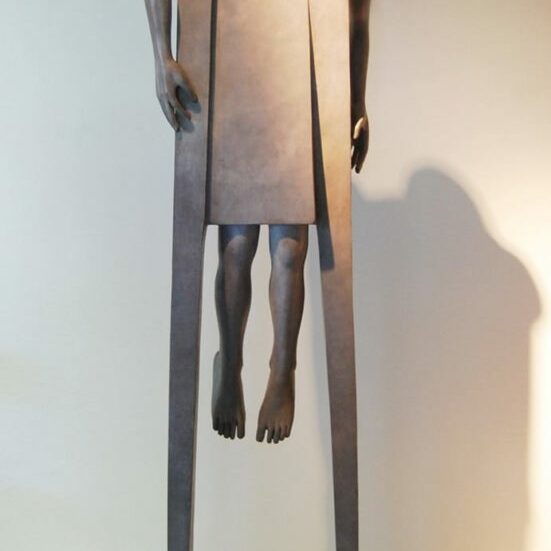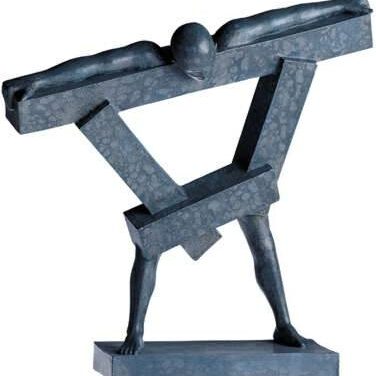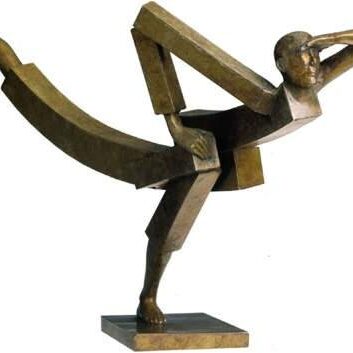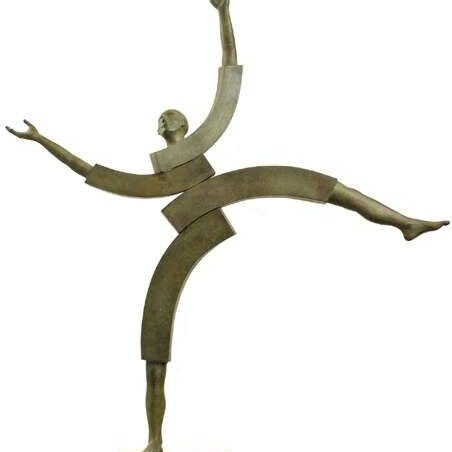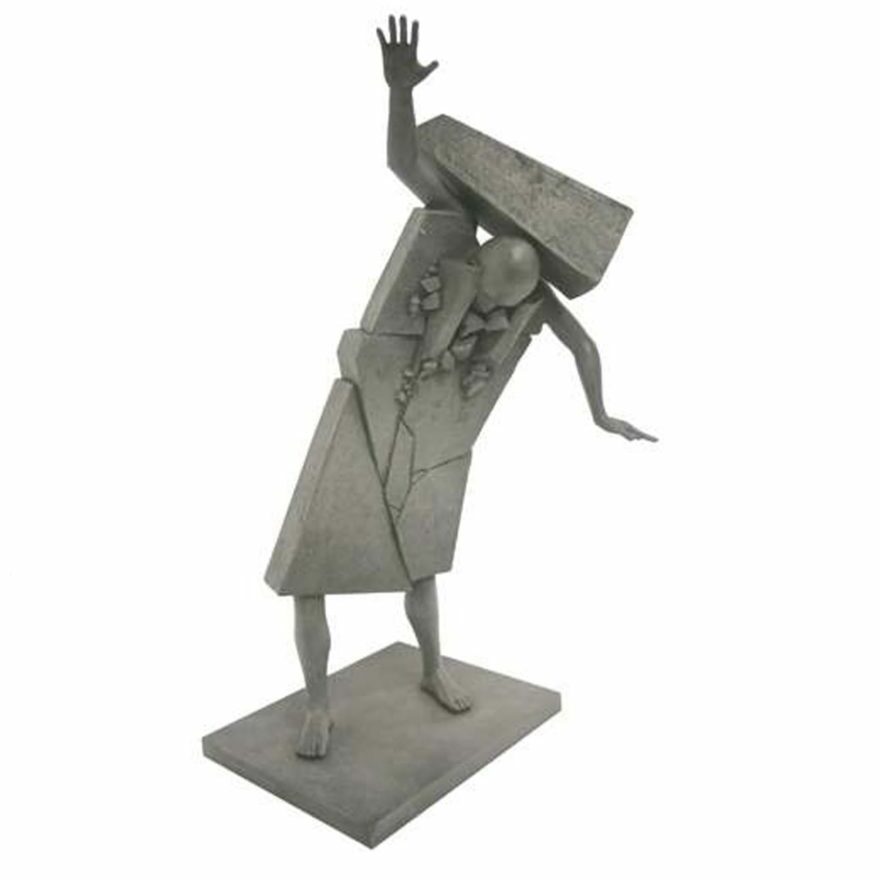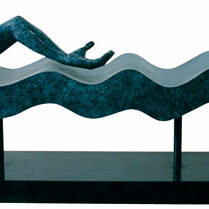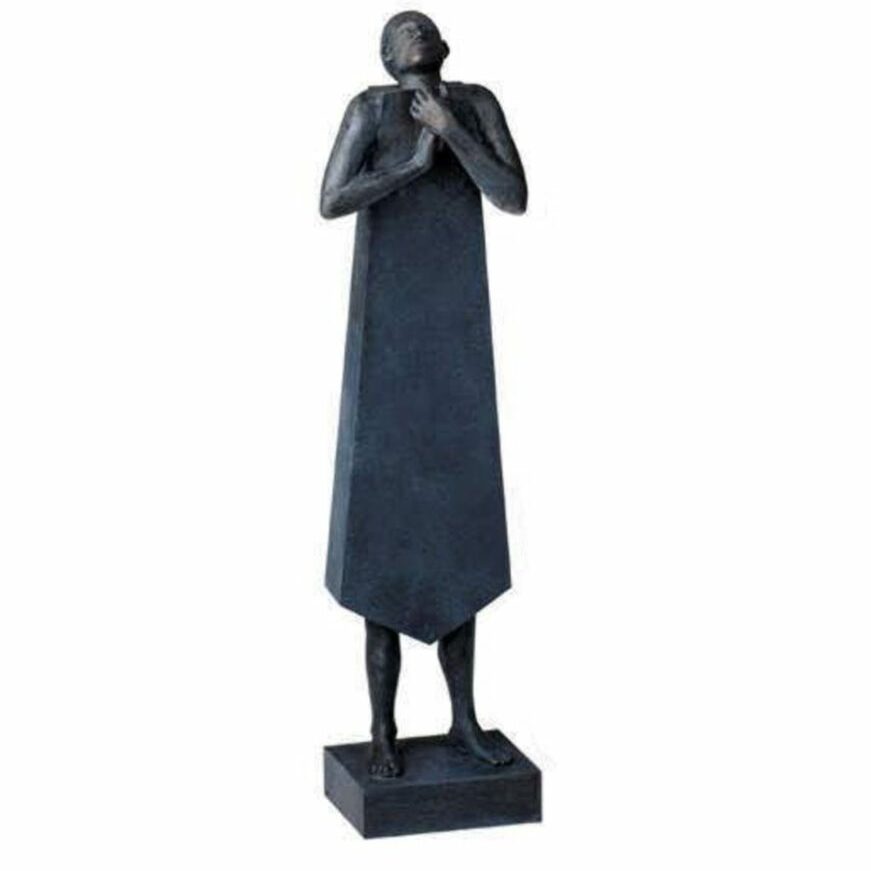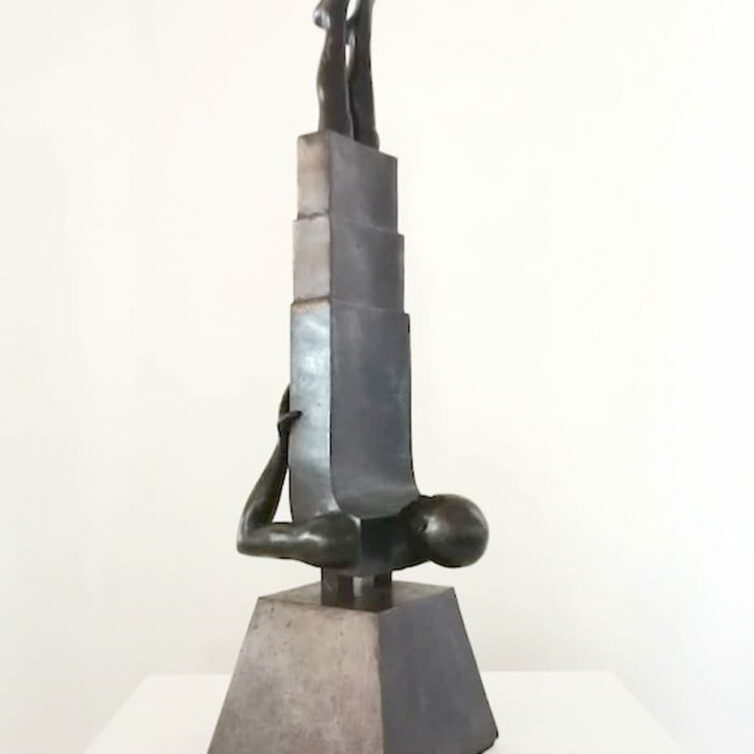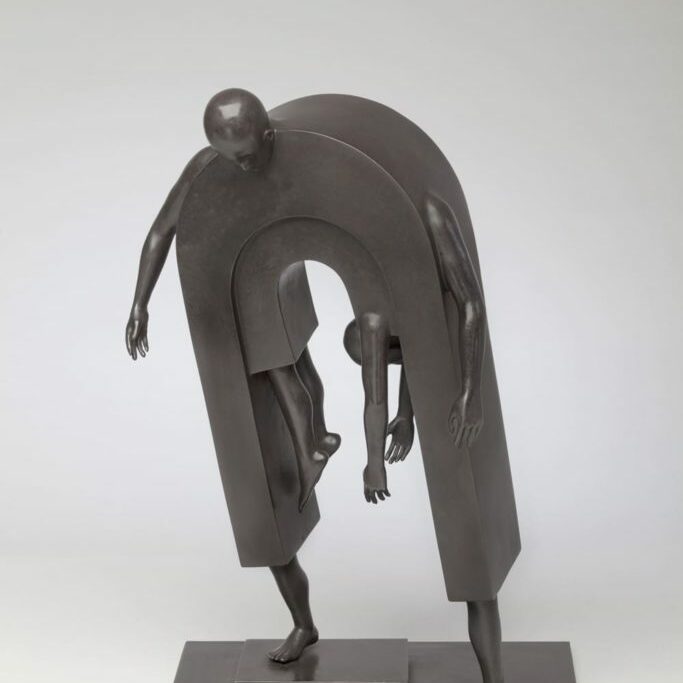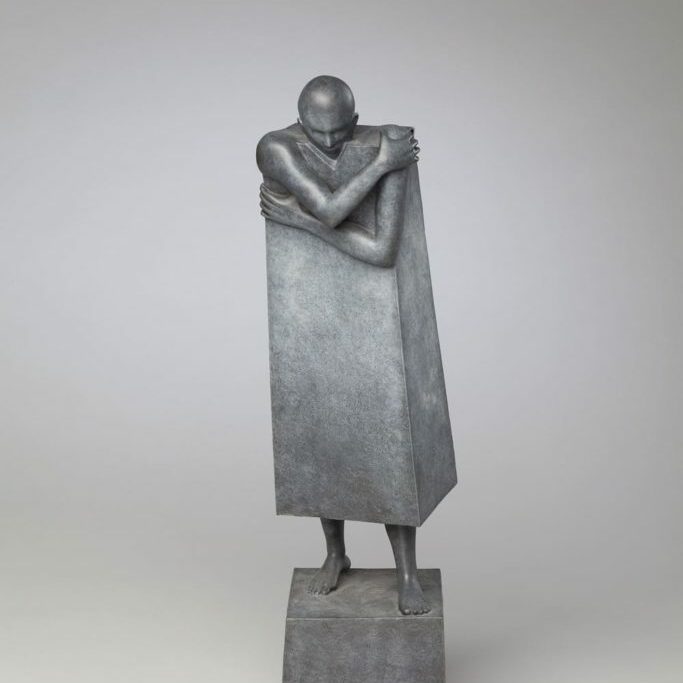Jean-Louis Corby
The human being (asexual) that Corby has invented is represented in its duplicity, its strength, its flexibility, its lack of freedom or its moving way of escaping or not the obstacles imposed on it, its triumphs, its universal plastic language and at the same time personal and unique which seizes each of us in our most intimate conscience
This is explained by the abstraction of movement and the meticulous individuality of the fingers and toes, by the impressive and omnipresent presence of the bronze or terracotta cage and the graceful and significant movements of the arms, by the compact appearance of the body which announces a fundamental impetus and also suggests the refinement of an identity, by a presence which seems to be a response to the enormous weight that the individual carries.
Corby is indeed a master in the art of giving form to a somewhat abstract general thought such as a crack, a rupture, uncertainty, imbalance and also of integrating into the character a more concrete data such as "suitcases", "stilts" and "liberation".
What initially presents itself as a playful formal contrast to the eyes of someone encountering Corby's work for the first time or superficially, gradually becomes the endearing unfolding of a number of phenomena, situations, or states of mind, an exciting synthesis of forms and thoughts, of spirit and matter, just as the artist's entire oeuvre is fundamentally a synthesis of tradition and the avant-garde, of subtle figuration and an original concept.
Corby stands apart as a sculptor in that he is an attentive narrator and simultaneously creates a superior sculptural interpretation of a rather commonplace subject. He thus frees a human apparition from any anecdotal burden, thanks to a playful metamorphosis and a surprising formal language. Furthermore, Corby demonstrates an originality, not only plastic but also spiritual, which personally enchants the viewer. Thus, the sculptor occupies a unique place in today's sculptural language in an atmosphere of suppleness and grace. Corby's sculptures suggest the duality of the human condition. They function perfectly as purely formal apparitions; they arouse interest and create wonder through the internal rhythm specific to each sculpture and through the signifiers that are attached to it, making each encounter a profoundly personal experience.
